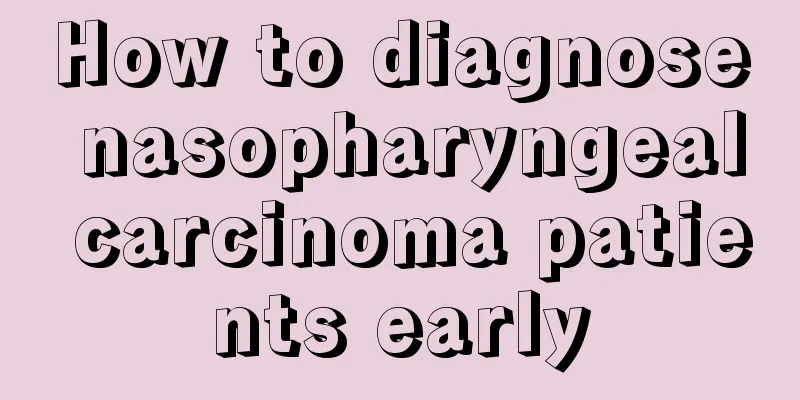How to care after primary liver cancer surgery? 6 treatment methods for primary liver cancer

|
Primary liver cancer has a fairly long natural course, at least 2 years. For liver cancer, active prevention and treatment should be carried out in the early stage, and appropriate surgical measures should be taken. So, how to care for primary liver cancer after surgery? Let's take a look. The natural history of primary liver cancer (1) Early subclinical stage: from the onset of disease to the diagnosis of subclinical liver cancer. If calculated from the earliest abnormality of AFp in the backlog, the median time is about 10 months (actually it may be longer), that is, the time required for the tumor to grow to a size that can be measured by current positioning methods (i.e. 1-2 cm). During this period, no abnormalities can be seen except for the low increase in AFp concentration. Early diagnosis and positioning are still difficult. (2) Subclinical stage (stage I): primary liver cancer from the time when the diagnosis of subclinical liver cancer is made to the onset of symptoms (about 8 to 9 months). Patients with subclinical liver cancer at this stage do not have any symptoms or signs, and diagnosis mainly relies on the detection of AFp, B-type ultrasound, CT examination, etc. The tumor is smaller at this stage, and there are more opportunities for surgical resection. About 90% of tumors can be removed early, and the 5-year survival rate after resection can reach about 90%, indicating that in most cases, the disease is still in a curable stage without obvious spread. (3) Intermediate stage (stage II): It refers to the period from the onset of symptoms and signs to the onset of jaundice, ascites or distant metastasis, which takes about 4 months. In this stage, most tests such as enzymes, liver function, and radionuclide scanning show abnormalities, so diagnosis is no longer difficult. The surgical resection and 5-year survival rates of patients in this stage are only about 20%, indicating that most patients have already had tumor spread. Both B-ultrasound and CT examinations can find cancer thrombi in the portal vein branches. The median diameter of the tumor in this stage has reached 9 to 10 cm. (4) Late stage (stage III): It refers to the period from the onset of jaundice, ascites, and distant metastasis to death, which is only about 2 months. At this stage, there is no effective treatment to prolong the patient's life. Cancer thrombus in the main trunk of the portal vein plays an important role in the irreversible disease process. How is primary liver cancer treated? Individualized comprehensive treatment according to the different stages of liver cancer is the key to improving the efficacy; treatment methods include surgery, hepatic artery ligation, hepatic artery chemoembolization, radiofrequency, cryosurgery, laser, microwave, chemotherapy and radiotherapy. Biological treatment and traditional Chinese medicine are also widely used in the treatment of liver cancer. 1. Surgery Surgery is the first choice and the most effective method for treating liver cancer. Surgical methods include radical liver resection, palliative liver resection, etc. 2. Treatment of unresectable liver cancer For liver cancer that cannot be removed, treatments such as intraoperative hepatic artery ligation, hepatic artery chemoembolization, radiofrequency, cryosurgery, laser, and microwave can be used according to specific circumstances and have certain effects. Primary liver cancer is also one of the indications for liver transplantation. 3. Chemotherapy If the laparotomy reveals that the tumor cannot be removed, or as a follow-up treatment for palliative tumor resection, regional chemoembolization can be performed by placing a pump (subcutaneous buried perfusion device) in the hepatic artery and/or portal vein. For those who are estimated to be unresectable by surgery, radiological intervention can also be performed, with selective cannulation through the femoral artery to the hepatic artery, and injection of embolic agents (commonly used such as iodized oil) and anticancer drugs for chemoembolization. Some patients may therefore have the opportunity for surgical resection. 4. Radiation therapy For patients with good general condition, good liver function, no cirrhosis, no jaundice, ascites, hypersplenism and esophageal varices, relatively localized cancer, no distant metastasis, and who are not suitable for surgical resection or have recurrence after surgery, comprehensive treatment with radiotherapy as the main method can be used. 5. Biological treatment Commonly used ones include immune RNA, interferon, interleukin-2, thymosin, etc., which can be used in combination with chemotherapy. 6. Treatment with traditional Chinese medicine The method of syndrome differentiation and treatment, combined with attack and supplement, is often used in conjunction with other therapies to enhance the body's resistance to disease, improve overall condition and symptoms, and reduce adverse reactions to chemotherapy and radiotherapy. Postoperative care for primary liver cancer First of all, let's all understand the diet after primary liver cancer surgery. We should pay attention to the principle of eating small and frequent meals. We can give low-fat semi-liquid food and gradually transition to normal food. The diet should be nutritious, diversified, and easy to digest. Do not eat irritating food. Secondly, for patients with primary liver cancer, surgery can be effectively used to treat liver cancer. For liver cancer patients, they should try to eat more nutritious foods after surgery, eat foods that are easier to digest, and avoid spicy and irritating foods. Finally, for liver cancer, after surgery, it is best to cooperate with traditional Chinese medicine for consolidation treatment. Liver cancer is more likely to recur and metastasize after surgery, so for liver cancer, we must actively do a good job of consolidation treatment to effectively prevent recurrence and metastasis. (Reference website: Medical Education Network) |
<<: Can advanced liver cancer be cured? Introduction to nine professional treatments for lung cancer
>>: What are the treatments for lung cancer? The 4 most effective treatments for lung cancer
Recommend
Does Xiao Sanyang need treatment?
The positive test for Hepatitis B virus indicates...
How much does minimally invasive surgery for bladder cancer cost
Bladder cancer not only has a great impact on the...
The specific index for diagnosing primary liver cancer is
Primary liver cancer is one of the most common ma...
Wisdom teeth cause bad breath_Do wisdom teeth cause bad breath
Although wisdom teeth are teeth that many people ...
How to diagnose early lung cancer
How to diagnose early lung cancer? Lung cancer ca...
How to treat different types of lung cancer What are the classifications of lung cancer
In terms of pathological type, lung cancer can be...
How long can you live with bladder cancer lung metastasis?
The life expectancy of patients with bladder canc...
How to make a hard peach soft
Peaches are a kind of fruit that many people like...
What to do if blisters appear after being scalded
There are often some unexpected things happening ...
The harm of hair dyeing, beauty should be pursued in moderation
Female friends should dye their hair from time to...
What should I pay attention to after ovarian tumor surgery
Now many female patients do not know when and why...
Let’s talk about the dietary prevention principles for ovarian cancer
In order to ensure that ovarian cancer patients c...
How long does it take to detect lymphoma
Cancer is a disease that is difficult to cure at ...
Is scraping for facial good?
The face is a part that almost everyone pays clos...
TCM skillfully treats esophageal cancer
Mr. Zhang, 57 years old this year, began to have ...









